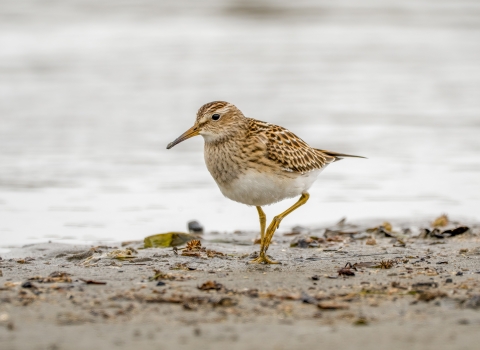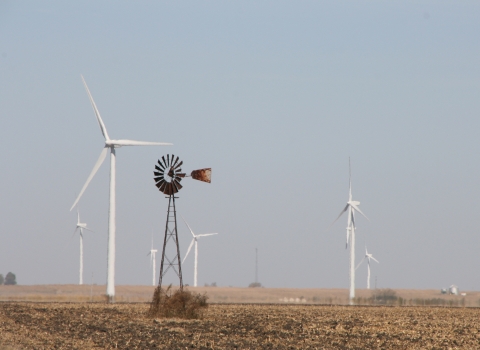DENVER – The U.S. Fish and Wildlife Service (Service) is announcing today the publication of a final rule to remove the Kanab ambersnail (Oxyloma haydeni kanabensis) from the Endangered Species Act list of threatened and endangered species. This determination follows a review of the best available science, which has indicated the Kanab ambersnail is not a distinct subspecies and therefore cannot be listed as an entity under the Endangered Species Act (ESA). This action follows the publication of the proposed rule on January 6, 2020.
The Kanab ambersnail was initially listed as endangered in 1991. It is a small snail in the Succineidae family, typically inhabiting marshes and other wetlands watered by springs and seeps at the base of sandstone or limestone cliffs. Three populations have been known to the Service, one in Three Lakes, UT, and in Vasey’s Paradise and Upper Elves Canyon, AZ.
In 2013 the U.S. Geological Survey (USGS) published a comprehensive, peer-reviewed, comparative genetic and morphological study of 11 populations of ambersnails (Oxyloma) in Utah and Arizona, including the Kanab ambersnail. USGS analyzed genetics, shell morphology, and reproductive soft tissue anatomy and found that the subspecies known as Kanab ambersnail is not a distinct subspecies. This finding is consistent with several other less comprehensive studies of the Kanab ambersnail that also indicate populations of this subspecies are not more closely related to each other than other ambersnails to be a subspecies. The USGS study concluded with a high degree of certainty that snails from all populations studied should likely be classified as Niobrara ambersnail (Oxyloma haydeni). The Niobara ambersnail is found across much of the western U.S. and Canada and is not considered threatened or endangered.
It is not uncommon for snails to be misclassified taxonomically due to the historical lack of genetic analysis access. Prior to advancements in genetic research, identification relied on morphological classification, which has been found to be less accurate for terrestrial snails.
Based on the USGS study's comprehensive analysis concluding that the Kanab ambersnail is not genetically distinct from other ambersnails, this is no longer a listable entity under the ESA. The final rule to delist the Kanab ambersnail due to taxonomic change is currently pending publication.
The mission of the U.S. Fish and Wildlife Service is working with others to conserve, protect, and enhance fish, wildlife, plants, and their habitats for the continuing benefit of the American people. For more information on our work and the people who make it happen in the West, visit our website, or connect with us through any of these social media channels: Facebook, Twitter, Flickr, YouTube, and Instagram.


